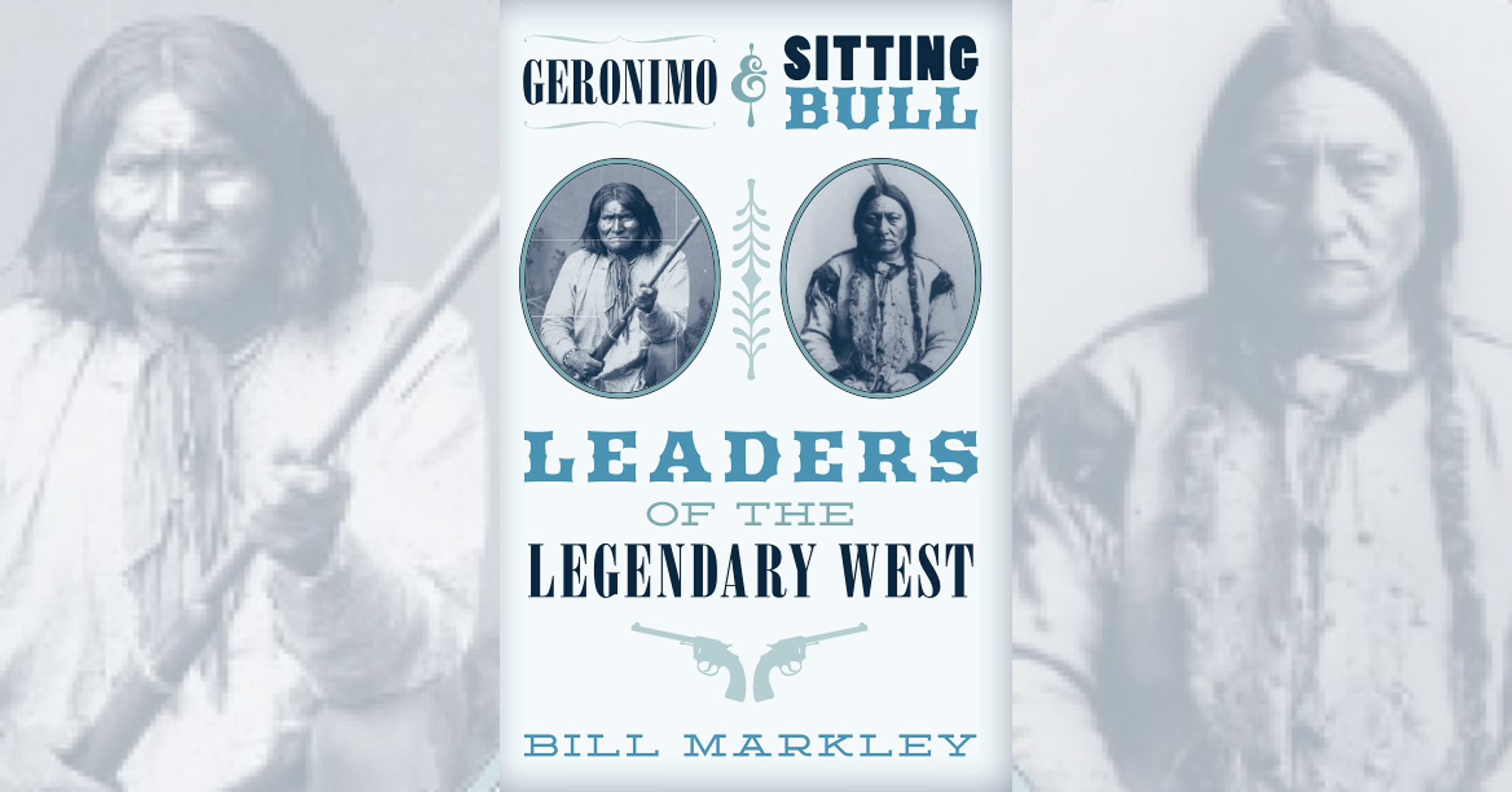Geronimo & Sitting Bull: Leaders of the Legendary West, by Bill Markley, TwoDot, Guilford, Conn., and Helena, Mont., 2021, $19.95
One operated in the American Southwest and Mexico, the other on the northern Great Plains and for a time in Canada. One was from the Bedonkohe band of the Chiricahua Apaches but never a chief. The other was a Hunkpapa Lakota political and spiritual leader who in the late 1860s was made supreme chief of the Sioux Nation. They never met.
So why present Geronimo (1829–1909) and Sitting Bull (circa 1831–1890) in a dual biography? Well, for one this informative book is the third volume of author Bill Markley’s Legendary West series, having already written the dual biographies Wyatt Earp & Bat Masterson (who were friends and lawmen together in Dodge City, Kan.) and Billy the Kid & Jesse James (who just may have met). For another Geronimo and Sitting Bull are probably the most famous American Indians of the Old West, yet Markley suggests the general public knows little about their lives. “During the second half of the 19th century, when they opposed white intrusion and expansion into their territories, just the mention of their names could spark fear or anger,” the South Dakota–based author writes in his introduction. “After they surrendered to the Army and lived in captivity, they evoked curiosity and sympathy for the plight of the American Indian. I’m concerned the current younger generation is losing touch with the past.”
Many writers, of course, have already published books about these two famous Indians. Among those cited by Markley are Geronimo: His Own Story (edited by S.M. Barrett, 1906), Geronimo: The Man, His Time, His Place (by Angie Debo, 1976), Geronimo (by Robert M. Utley, 2012), From Cochise to Geronimo: The Chiricahua Apaches 1874–1886 (by Edwin R. Sweeney, 2010), Sitting Bull: His Life and Legacy (by Ernie LaPointe, great-grandson of Sitting Bull, 2009) and The Lance and the Shield: The Life and Times of Sitting Bull (by Robert M. Utley, 1993, which Markley considers the gold standard of biographies on Sitting Bull). None of these fine works put Geronimo and Sitting Bull under the same cover. Although Markley doesn’t stress what the two leaders had in common, they both resisted U.S. Western expansion; both wanted to continue to live as their ancestors had done; both showed military prowess; both surrendered to the United States (Geronimo did so a number of times); both reportedly had spiritual qualities, including the gift of insight and prophecy; both became prisoners of war and continued as leaders of their people after their fighting days were over; and both were photographed often in their later years and sometimes charged for their autographs and photos.
Markley basically follows the lives of his latest featured duo in chronological order, most chapters covering the activities of both men, starting with “Chapter 1: The Early Years, 1829–1845” and ending with “Chapter 12: Geronimo, Prisoner of War, and Sitting Bull on the Reservation, 1886–1900.” A few of the chapters concentrate on one or the other, such as “Chapter 6: Little Big Horn Summer 1876” and “Chapter 14: The Life and Death of Geronimo, 1890–February 17, 1909.” Interspersed are sidebars on such topics as the Lakota Sun Dance, the Apache Sunrise Ceremony, the Ghost Dance, Sitting Bull’s graves and Geronimo’s skull. To see photos of the principals, readers will have to look elsewhere, though the insightful book does include 16 illustrations from Jim Hatzell of Rapid City, S.D., who also created illustrations for Markley’s first two books in the series.
Markley dedicates the book to his parents and the Chiricahua and Hunkpapa people. He includes opening quotes that capture the essence of his two subjects. “We will avoid them [the Army] if we can,” said Sitting Bull. “If we cannot, we will fight.” Geronimo showed equal resolve when he said, “We thought it more manly to die on the warpath than to be killed in prison.” Readers may also wonder what Sitting Bull and Geronimo might have said to each other had they actually met at some point in their storied but separate lives.
—Editor
This post contains affiliate links. If you buy something through our site, we might earn a commission.





